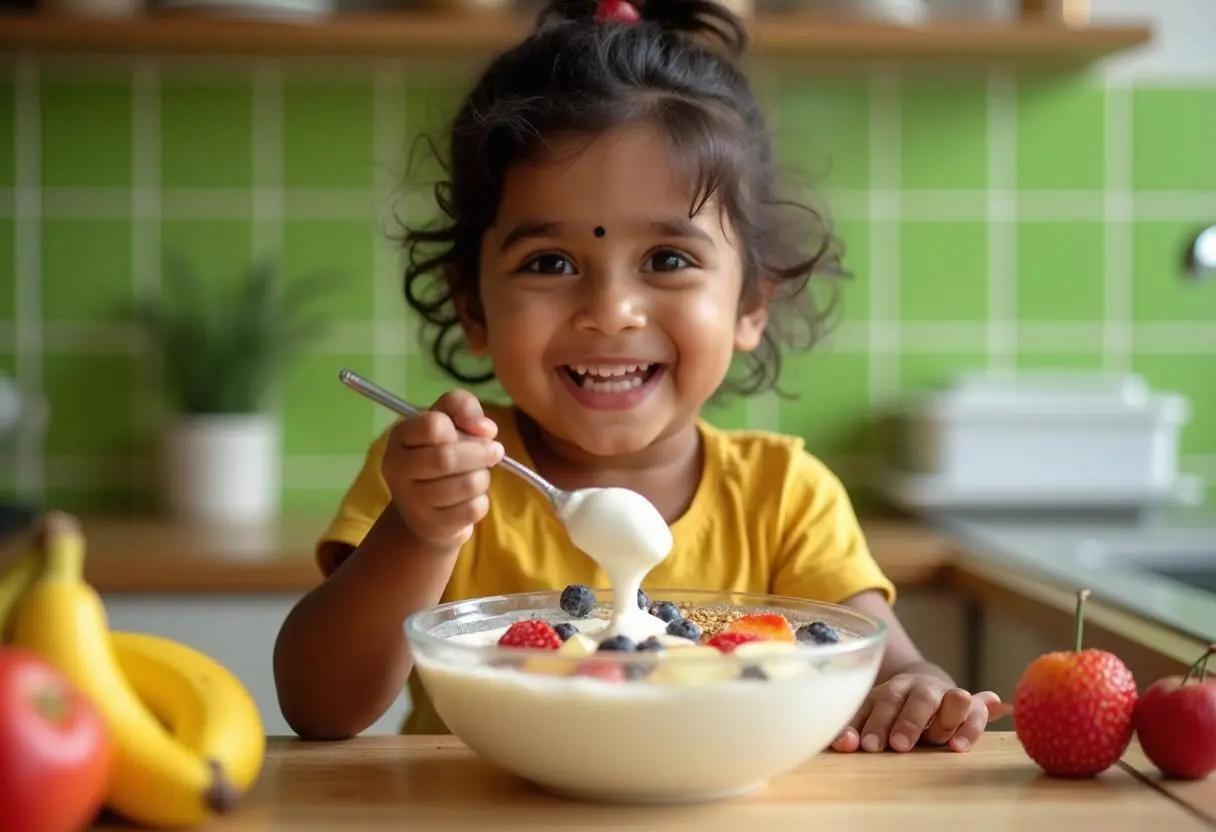Learning how to keep children away from junk food is one of the most common and challenging puzzles for modern parents. Here in the early hours in Pune, as you reflect on the day, you might be worried about the packets of chips, the sugary drinks, or the constant requests for pizza that seem to dominate your child’s cravings. It can feel like a constant battle, leaving you exhausted and wondering if you’re making the right choices for their health.
You want to provide the best for your child, but we live in a world where colourful, hyper-palatable junk food is everywhere—advertised on TV, available at every corner store, and a staple at every birthday party. Banning it completely often feels impossible and can even make it seem more desirable.
So, what is a concerned parent to do? The answer lies not in creating a food war, but in building a positive food culture at home. It’s about strategy, not strictness. Let’s explore seven practical and positive ways you can gently guide your children towards healthier eating habits.
Table of Contents
It’s Not a War, It’s a Strategy: Shifting Your Mindset About Junk Food
The first step in learning how to keep children away from junk food is to reframe the goal. A complete, lifelong ban is unrealistic and can lead to children overindulging when they are not with you. A healthier approach is to focus on balance and moderation.
Think of the “80/20” rule. If you can ensure that 80% of what your child eats is wholesome and nutritious, you don’t need to stress about the 20% that includes occasional treats like birthday cake or a small packet of chips. This mindset shifts the focus from “deprivation” to “nourishment,” which is a much healthier foundation for a lifelong relationship with food.
7 Positive Strategies on How to Keep Children Away from Junk Food
Here are seven proactive and gentle strategies to make healthy food the easy and appealing choice in your home.
1. Lead by Example (Be a Role Model)
Children are mirrors; they reflect what they see. If they see you reaching for fruit as a snack, they are far more likely to do the same. If they see you enjoying a plate of salad, it will seem normal and appealing.
- The Strategy: Be mindful of your own eating habits. Express enjoyment when you eat healthy foods. Say things like, “This crunchy carrot is so delicious!” or “I feel so full of energy after eating this dal.” Your positive attitude is more influential than any lecture.
2. Stock Your Kitchen Wisely (Control the Home Environment)
This is the most direct and effective strategy. You are the gatekeeper of your home’s food supply.
- The Strategy: Make healthy foods the most accessible options. Keep a bowl of fresh fruit on the counter. Store cut vegetables like carrots and cucumbers at eye level in the fridge. And most importantly, simply don’t buy the junk food you don’t want them to eat. If packets of chips and sugary biscuits aren’t in the house, they can’t become a daily habit.
3. Involve Them in the Kitchen (Make Healthy Food Fun)
Children are more invested in—and more likely to eat—food that they have helped to prepare.
- The Strategy: Assign age-appropriate kitchen tasks. A young child can wash vegetables or stir a bowl of batter. An older child can help chop vegetables or measure ingredients for a homemade roti pizza. This turns food preparation into a fun, bonding activity.
4. Create Healthy, “Junk Food” Alternatives
Often, children crave the taste and texture of junk food. You can satisfy these cravings with delicious and nutritious homemade versions. This is a key part of how to keep children away from junk food without them feeling deprived.
- The Strategy:
- Instead of fried potato chips, make baked sweet potato wedges or roasted makhana (fox nuts) with a pinch of salt and turmeric.
- Instead of sugary sodas, make a refreshing fruit smoothie or a traditional yogurt lassi.
- Instead of ordering a pizza with a refined flour base, make a fun whole-wheat roti or naan pizza at home with lots of veggie toppings.
5. Don’t Use Food as a Reward or Punishment
Using junk food as a reward for good behaviour or withholding it as a punishment creates a powerful emotional charge around it.
- The Strategy: Avoid saying things like, “If you finish your homework, you can have chocolate,” or “If you don’t behave, you won’t get any ice cream.” This elevates junk food to a special, highly desirable status. Reward your child with non-food items, like extra playtime, a new book, or a fun outing.
6. Educate, Don’t Dictate (Talk About ‘Go’ and ‘Slow’ Foods)
Instead of labelling foods as “good” and “bad” (which can create guilt), talk about them in terms of how they help our bodies.
- The Strategy: Frame it simply. “Go Foods” are things like fruits, vegetables, and dal that give us lots of energy to run, play, and learn. “Slow Foods” are things like chips and cake that are okay to have sometimes, but they don’t give our bodies much energy and can make us feel tired if we eat too much. This empowers them to start thinking for themselves.
7. Pack Smart for School and Outings
A prepared parent can easily navigate the temptations of the outside world.
- The Strategy: Pack a tiffin with appealing and healthy snacks for school. A small container of fruit, some nuts, or a homemade whole-grain sandwich can prevent your child from buying unhealthy packaged snacks from the school canteen. When you go out, carry a water bottle and a healthy snack to avoid impulsive buys.
Navigating the Outside World: Parties, Peers, and Grandparents
It’s important to be realistic. You can’t control every food your child eats outside the home.
- For Parties: Let them enjoy the cake and snacks as a special treat without making them feel guilty.
- For Grandparents: Have a gentle, respectful conversation. Explain your goals for your child’s health and suggest healthier treats they can offer, like a fruit-based dessert or a favourite homemade snack.
Conclusion: Building a Lifelong Healthy Relationship with Food
The journey of teaching your child healthy eating habits is a marathon, not a sprint. The goal of learning how to keep children away from junk food is not to create a restrictive environment, but to build a foundation of mindful eating and a love for wholesome, nourishing foods.
Be patient, be consistent, and celebrate small successes. By making healthy eating a normal, joyful part of your family’s life, you are giving your child one of the greatest gifts of all: a lifelong healthy relationship with food.
What’s your favourite healthy snack to make for your kids that they absolutely love? Share your recipes and ideas with our community of parents in the comments below!




